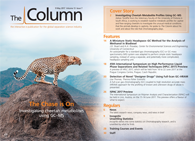Graphene Coated Phases for Ion Chromatography
Researchers from Zhejiang University, China, have created a graphene-coated polymeric stationary phase and demonstrated its performance separating inorganic anions, organic acids, carbohydrates, and amino acids using anion exchange chromatography.
Photo Credit: Rost9/Shutterstock.com

Researchers from Zhejiang University, China, have created a graphene-coated polymeric stationary phase and demonstrated its performance separating inorganic anions, organic acids, carbohydrates, and amino acids using anion exchange chromatography (1).
Carbonaceous materials have gained increased interest in separation science and chromatographic research, their unique physical and chemical properties offering peculiar selectivity and robustness under extreme conditions.
Building upon a previously reported facile cladding technique (2), researchers fabricated chemically derived graphene (cdG)-coated polymeric particles. They treated the particles with cationic polyelectrolytes, followed with a hyperbranching process of polyquaternary polymers to endow anion exchange abilities. The resulting particles were then utilized as a stationary phase for ion chromatography (IC) and investigated.
Researchers highlighted the increased wettability of the graphene-coated particles resulting from their pellicular structure. Their hydrophilic nature further facilitated the grafting of hyperbranched condensation polymers (HBCPs), which convert the particles into anion exchangers.
The results indicated good efficiencies and symmetries when separating diverse anionic analytes during IC. The cdG layers combined with anion exchange functionalities were proved chemically stable by consecutive injections with good reproducibility.
The cladding–grafting method used was described as easy to use and versatile by the authors with future research planned to explore other substrates and media.
References
- K. Zhang et al., Anal. Chim. Acta970, 73–81 (2017).
- Y.A. Samad, Y.Q. Li, S.M. Alhassan, and K. Liao, Rsc. Adv.4, 16935–16938 (2014).













